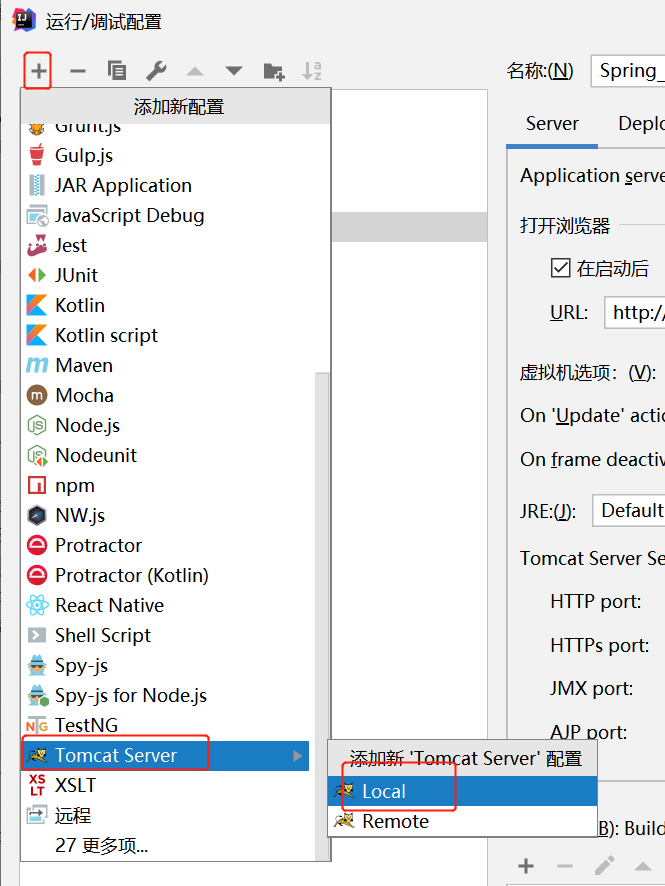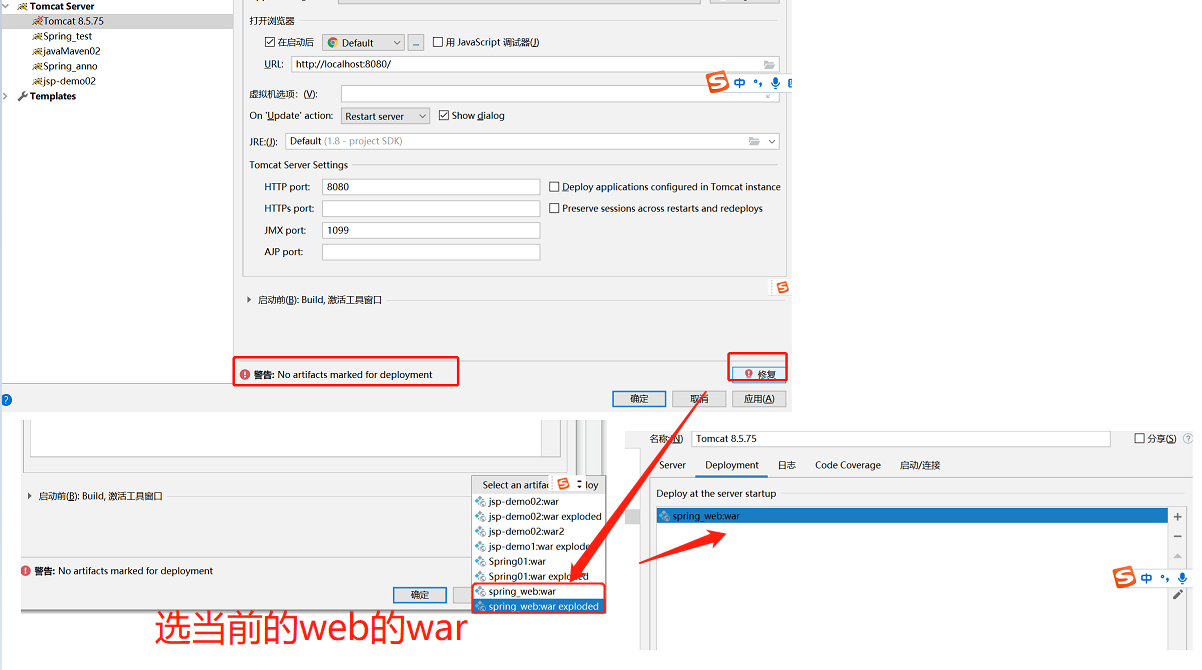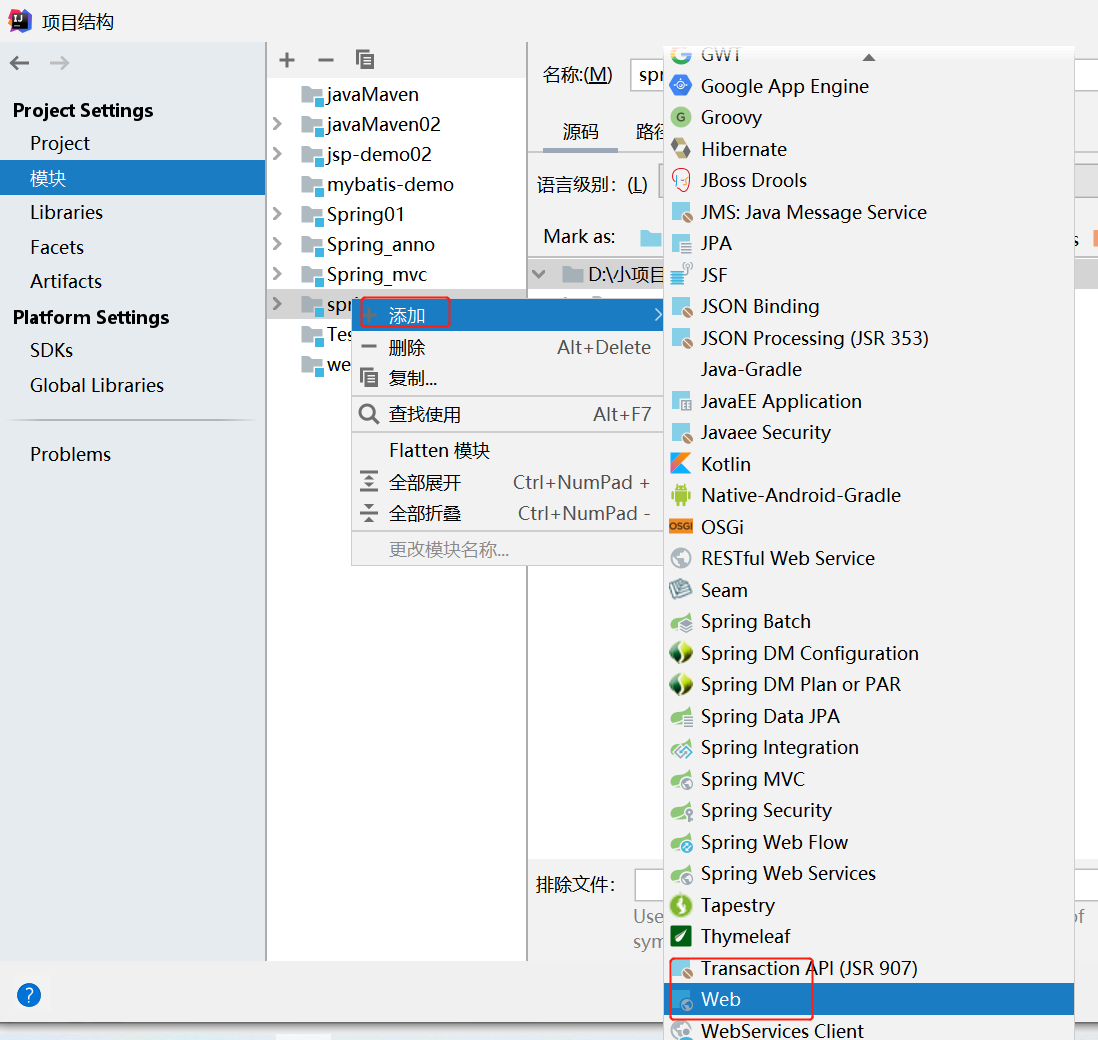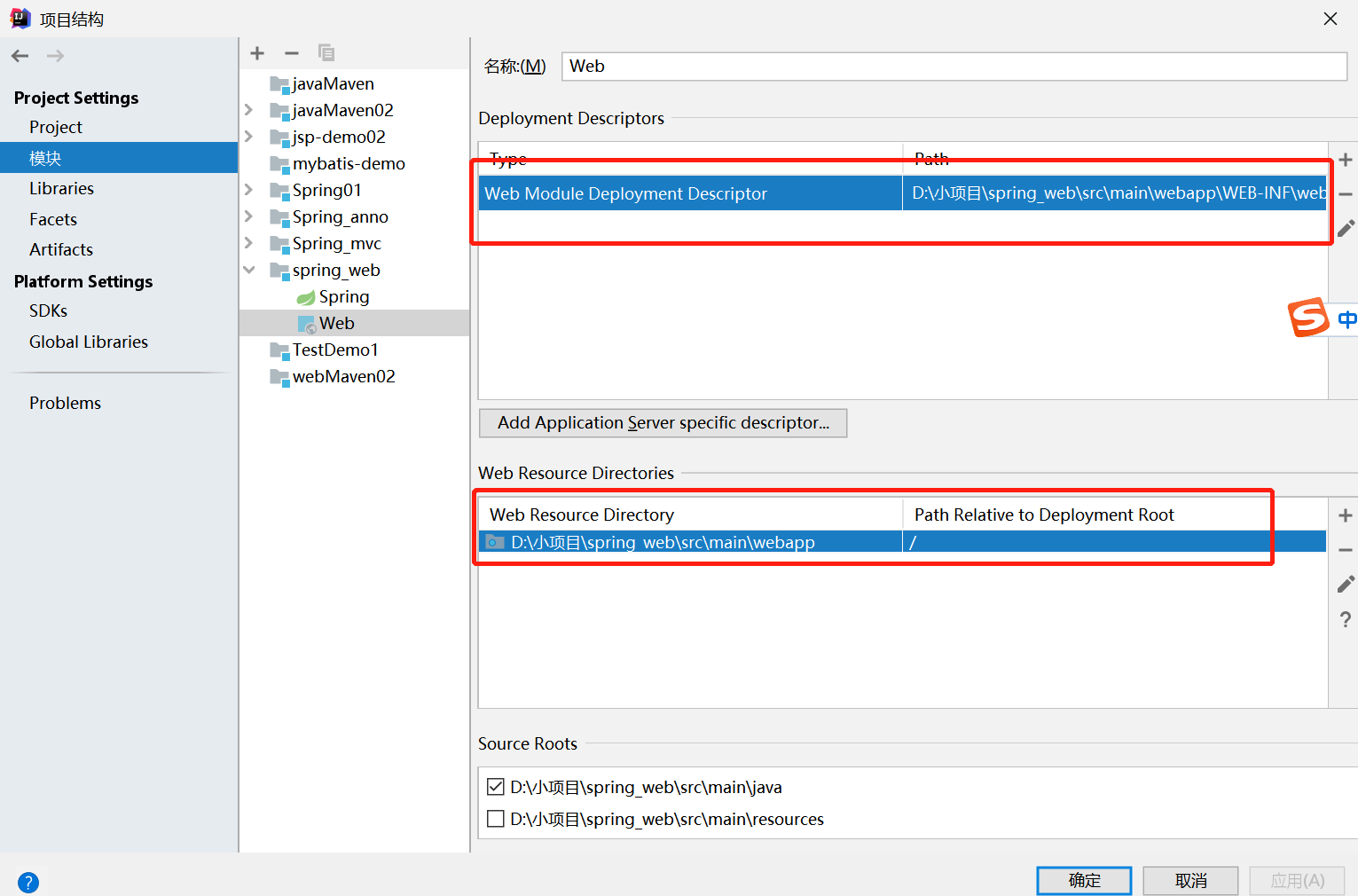Maven配置tomcat服务器和ApplicationContext应用上下文获取方法
目录
Maven配置tomcat服务器
首先这得是war包,如果这是普通包得添加webapp,并将pom.xml中加入如下,表示这是一个web文件
加完之后点击编辑配置
其下的war二选一即可
完成之后点击确认即可完成配置。
使用maven手动创建web工程
第一步,点击项目结构,选中 要添加的maven工程,右键添加web。
第二步,点击web工程,修改web工程路径
点击完成即可完成web工程的手动配置。
ApplicationContext应用上下文获取方法
应用上下文对象是通过new ClasspathXmlApplicationContext(spring配置文件)方式获取的,但是每次从容器中获得Bean时都要编写new ClasspathXmlApplicationContext(spring配置文件),这样的弊端是配置文件加载多次,应用上下文对象创建多次。
在Web项目中,可以使用ServletContextListener监听Web应用的启动,我们可以在Web应用启动时,就加载Sprina的配置文件,创建应用上下文对象ApplicationContext,在将其存储到最大的域servletContext域中,这样就可以在任意位置从域中获得应用上下文ApplicationContext对象了。
新建一个Listenter包下的ContextLoderListener
web包下
web.xml下配置监听器
自动创建spring容器
优化代码
解耦合1
由于监听器内部我们将代码写固定了,不利于后期的维护操作,所以要解耦合,写在配置文件中进行解耦合。(“”引号内的名字任意)
ApplicationContext app = new ClassPathXmlApplicationContext("applicationContext.xml");将此个代码写入到web.xml中进
在ContextLoaderListenter类中
读取配置文件的值,这样就完成了解耦合
解耦合2
在userServlet类中
ApplicationContext app = (ApplicationContext) servletContext.getAttribute("app");这样耦合了app代码,让这个只能叫做app,这样不利于后期维护和辨认。
所以我们这么改,在Listener包下创建一个工具类WebApplicationContextUtils
在userServlet处代码修改为
- 点赞
- 收藏
- 关注作者







评论(0)